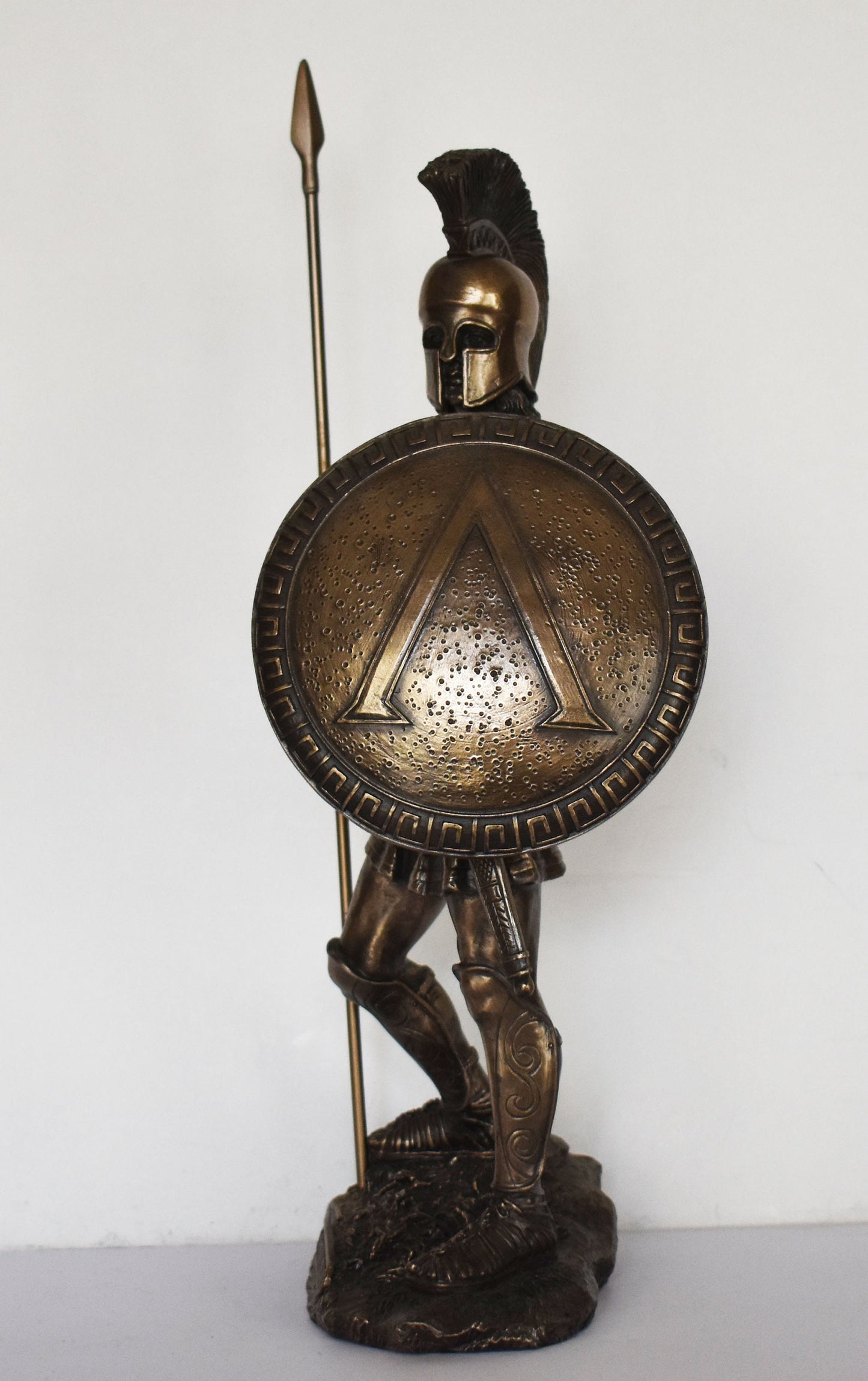Gallery Demeter
Spartan Hoplite - King Leonidas and 300 - Battle of Thermopylae - 480 BC - Cold Cast Bronze Resin
Spartan Hoplite - King Leonidas and 300 - Battle of Thermopylae - 480 BC - Cold Cast Bronze Resin
Couldn't load pickup availability
Details:
Condition: New
Material: Cold Cast Bronze Resin
Height: 36 cm - 14,2 inches
Width: 12 cm - 4,7 inches
Length: 9 cm - 3,5 inches
Weight: 1200 g
Hoplites were citizen-soldiers of Ancient Greek city-states who were primarily armed with spears and shields. Hoplite soldiers utilized the phalanx formation to be effective in war with fewer soldiers. The formation discouraged the soldiers from acting alone, for this would compromise the formation and minimize its strengths. The hoplites were primarily represented by free citizens – propertied farmers and artisans – who were able to afford a linen armour or a bronze armour suit and weapons (estimated at a third to a half of its able-bodied adult male population). Most hoplites were not professional soldiers and often lacked sufficient military training. Some states maintained a small elite professional unit, known as the epilektoi ("chosen") since they were picked from the regular citizen infantry. These existed at times in Athens, Argos, Thebes, and Syracuse, among others. Hoplite soldiers made up the bulk of ancient Greek armies.
In the 8th or 7th century BC, Greek armies adopted the phalanx formation. The formation proved successful in defeating the Persians when employed by the Athenians at the Battle of Marathon in 490 BC during the First Greco-Persian War. The Persian archers and light troops who fought in the Battle of Marathon failed because their bows were too weak for their arrows to penetrate the wall of Greek shields that comprised the phalanx formation. The phalanx was also employed by the Greeks at the Battle of Thermopylae in 480 BC and at the Battle of Plataea in 479 BC during the Second Greco-Persian War.
GRI 145-75963Α1 ΣΠΑΡΤΙΑΤΗΣ 36 ΕΚ - 44









